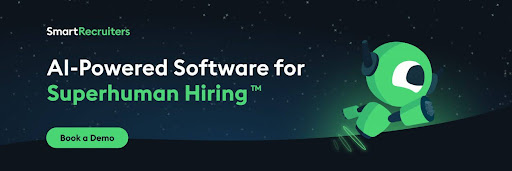On Tuesday 22 August, SmartRecruiters is hosting a MeetUp event at which the topic of discussion will be the challenges, solutions and benefits to creating an inclusive workplace.
Ahead of the event, we thought it would be helpful to dive a little deeper into an area of diversity and inclusion that many companies often find to be the most challenging: disability.
The Disability Employment Gap
While many minority groups have seen their employment situation improve in recent years, the disability employment gap in the US has increased between 1990 and 2015. The ‘disability employment gap’ refers to the difference between the employment rate of non-disabled people and disabled people aged 16-64. Figures for 2016, according to the US Department of Labor, show the disability employment gap to be 45% as only 27.7% of disabled people were in work compared with 72.8% of non-disabled people.
Figures in the UK, meanwhile, have remained stubbornly static. In 2016, 80.5% of non-disabled people are in work compared to 48.3% of disabled people; a gap of 32%, according to the Office of National Statistics.
| Country / Employment Rate (%) | Disabled | Non-disabled | Gap |
| US | 27.7 | 72.8 | 45.1 |
| UK | 48.3 | 80.5 | 32.2 |
| France | 56.2 | 66.1 | 9.9 |
| Germany | 51.5 | 71.1 | 20.6 |
1. US, 2016 https://www.dol.gov/odep/topics/DisabilityEmploymentStatistics.htm
2. UK, 2016 https://fullfact.org/economy/disability-employment-gap/
3. France and Germany, 2011 http://ec.europa.eu/eurostat/documents/2995521/6181592/3-02122014- BPEN.pdf/aefdf716-f420- 448f-8cba- 893e90e6b460
*Each country has slightly varied definitions of disability
Benefits of an Inclusive Workplace
In a recent Glassdoor survey, two-thirds of the people polled said that diversity was important to them when evaluating companies and job offers. Increasingly, applicants are looking at culture and values over perks and mission statements. Therefore, developing an inclusive culture could be the deciding factor when trying to attract the top talent. More difficult to measure; but important nonetheless, is the value your customers put on your reputation as being an inclusive employer.
There is growing consensus that recruiting a non-homogenous workforce increases innovation and improves productivity as employees with diverse experiences have different approaches to problem solving. A Forbes study, for example, identified workforce diversity and inclusion as a key driver of internal innovation and business growth.
Then we have the recruitment process itself as embracing the benefits of a diverse workforce gives your organisation access to a larger talent pool. It’s worth noting that the SmartRecruiters Talent Acquisition Suite can assist in this regard, as our interview scorecard ensures recruiters and hiring managers are focusing on skills rather than stereotypes.
An often understated benefit of a diverse workforce is the extra costs associated with poor retention. Employees who feel included are likely to have higher levels of loyalty and enthusiasm and less likely to be looking for another job as a result. Everyone benefits from an inclusive workplace, not just disabled people.
Hiring Success: People with Disabilities
For many employers, the thought of reviewing the accessibility of their recruitment processes can be a daunting prospect; so don’t worry, you’re not alone. Throughout the recruitment process, it’s important to remember that disabled people are not a homogenous group but instead are individuals with varying needs and capacities that can contribute in different ways.
Here’s some top tips that will make your recruitment processes more accessible:
General
- Review accessibility for wheelchair users, mobility related impairments and people with visual impairments
- Review accessibility of the application process
- Ensure that all candidates are asked if they have specific requirements at each stage of the interview process
- Offer before you help
- Talk directly to the person
- Respect personal space
- If in doubt, ask. They probably know what’s best for them
People with learning disabilities
- Treat adults as adults
- Use plain language
- Repeat information, using different wording if necessary
- If appropriate, offer to read written information
Mental Health
- Be patient and non-judgmental
- Offer to provide written information
- Be reliable and punctual
Deaf, hearing loss & hearing impaired
- Ask preferred method of communication
- Be patient
- Don’t say “never mind”
- Repeat or rephrase but don’t exaggerate mouth movements
- Face the person, not the interpreter
- Tap for attention
Of course, this is not an exhaustive list and government agencies and related organisations should be contacted if you’re seeking further advice. Nevertheless, you are who you hire and by making your recruitment process more accessible to disabled people your company is sure to reap the benefits of a diverse workplace.
D&I: Tactics for a more inclusive workplace is on Tuesday 22 August.






